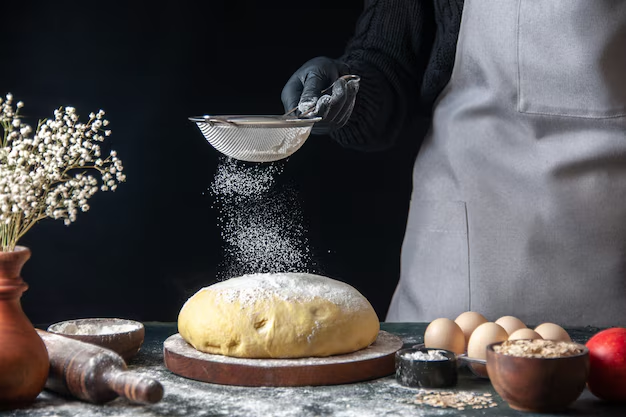How to Effortlessly Soften Cookie Dough From the Refrigerator
A batch of homemade cookies waiting to be baked is a thing of beauty. But what happens when you pull your pre-prepared cookie dough out of the fridge, ready to scoop and bake, only to find it as hard as a rock? For many, this is a common kitchen conundrum. Fear not, for softening cookie dough straight from the refrigerator is simpler than you might think. This guide will explore effective methods and share tips that ensure your baking process is seamless and delicious.
Why Does Cookie Dough Harden in the Fridge?
Understanding the Science
Refrigerating cookie dough is a standard practice for anyone passionate about baking. It helps the flavors meld together, results in a cookie with desirable texture, and ensures the dough doesn't spread too thin in the oven. However, chilling also leads to hardened fats — typically butter or margarine in your dough. Fats solidify at lower temperatures, rendering the dough stiff and challenging to work with when you’re ready to bake.
The Benefits Beyond Softness
While refrigerating dough can be problematic for immediate baking, it's beneficial in several ways:
- Flavor Enhancement: Allowing the dough to rest improves the flavor, giving cookies a deeper, richer taste.
- Texture Improvement: Chilled dough often results in chewier cookies with a crisp edge.
- Shape Retention: Cold dough spreads less during baking, helping to maintain its intended shape and structure.
Techniques to Soften Cookie Dough
With the science aside, let's delve into practical techniques to soften your cookie dough without compromising its quality.
1. Time and Patience
The simplest and most foolproof method is to let your dough sit at room temperature. Patience is key; depending on the dough's thickness, this could take anywhere from 20 minutes to over an hour. Here's how to expedite this process:
- Slice the Dough: If your dough is in a large batch, cut it into smaller portions. This increases surface area and reduces warming time.
- Flatten with a Rolling Pin: Gently pressing the dough flat encourages quicker warming. Be cautious not to overdo it or alter the dough's consistency.
2. The Microwave Method
A quicker alternative involves carefully using the microwave. Though effective, it requires precise control to avoid partially cooking the dough.
- Low Power Setting: Set the microwave to its lowest power and heat the dough in 10-second increments. Rotate the dough between each session to ensure even warming.
- Watch for Softness: As soon as the dough is pliable, remove it from the microwave immediately to prevent any unwanted baking.
3. The Water Bath Trick
This method is gentle and ensures even softening without overdoing it:
- Container Setup: Place the cookie dough in a sealed plastic bag. Ensure the seal is firm to prevent water entry.
- Warm Water Bath: Submerge the bag in a bowl of warm (not hot) water. Warm water helps the dough reach the desired texture without cooking or melting the butter.
- Check Regularly: Test the dough's softness every few minutes to avoid oversoftening.
4. Room Temperature Butter
For future batches, consider using softened butter from the start. This adjustment can reduce hardening:
- Uniform Softening: Allow the butter to reach room temperature before adding it to your mix. This avoids dramatic texture changes in the fridge and offers a head start when softening the dough later.
Additional Tips and Tricks
Successfully managing cookie dough's texture involves understanding a few key principles. Consider these additional insights for consistent results:
Customize for Cookie Type
Different cookie recipes may respond better to varying softening techniques. For example, doughs heavy in sugar or chocolate may require longer softening than those with lighter ingredients. Anticipate these differences when planning your process.
Flour Types and Their Impact
The kind of flour you use plays a significant role in the dough's chilling dynamics. Higher protein flours, such as bread flour, absorb moisture differently than all-purpose flours, affecting how the dough responds to softening. Tailoring your method to accommodate flour type can improve outcomes.
Streamline with Correct Storage
- Separate Portions: Divide your dough into sections prior to refrigerating. This adjustment assists in quicker softening.
- Use Wax Paper or Plastic Wrap: These materials help retain moisture within the dough, preventing excessive drying or hardening.
Use a Digital Thermometer
To achieve optimal softness, especially when dealing with thinner dough recipes, a digital kitchen thermometer can provide insight:
- Ideal Temperature: Allow the dough's internal temperature to reach around 65-68°F (18-20°C) for baking-ready consistency.
🤔 FAQ: Common Queries on Softening Cookie Dough
Can I refreeze softened dough?
- Yes, but consider the impact on texture with each freeze-thaw cycle.
What if dough softens too much?
- Simply place it back in the fridge for a short period until it firms adequately.
Should I add liquids to speed softening?
- Avoid adding liquid as it may destabilize the dough's structure.
Summarized Takeaways
Here's a quick reference to swiftly soften cookie dough for baking bliss:
- 🌡️ Return to Room Temp: Let sit naturally for mild softening.
- ⚡ Microwave Conservatively: Utilize low settings for speed.
- 💧 Try a Warm Water Bath: Great for controlled softening.
- 🧈 Start with Softened Ingredients: Forethought can avert further hardening.
In conclusion, mastering cookie dough's softening process is crucial for anyone looking to achieve the perfect batch of cookies. By understanding your options and applying the appropriate techniques, you ensure that your transition from refrigerator to oven is as smooth as possible. Whether you're preparing chocolate chip classics or intricate gingerbreads, having a handle on dough management enhances your baking repertoire and elevates your kitchen expertise. What methods will you experiment with first? Your ideal cookie awaits!
